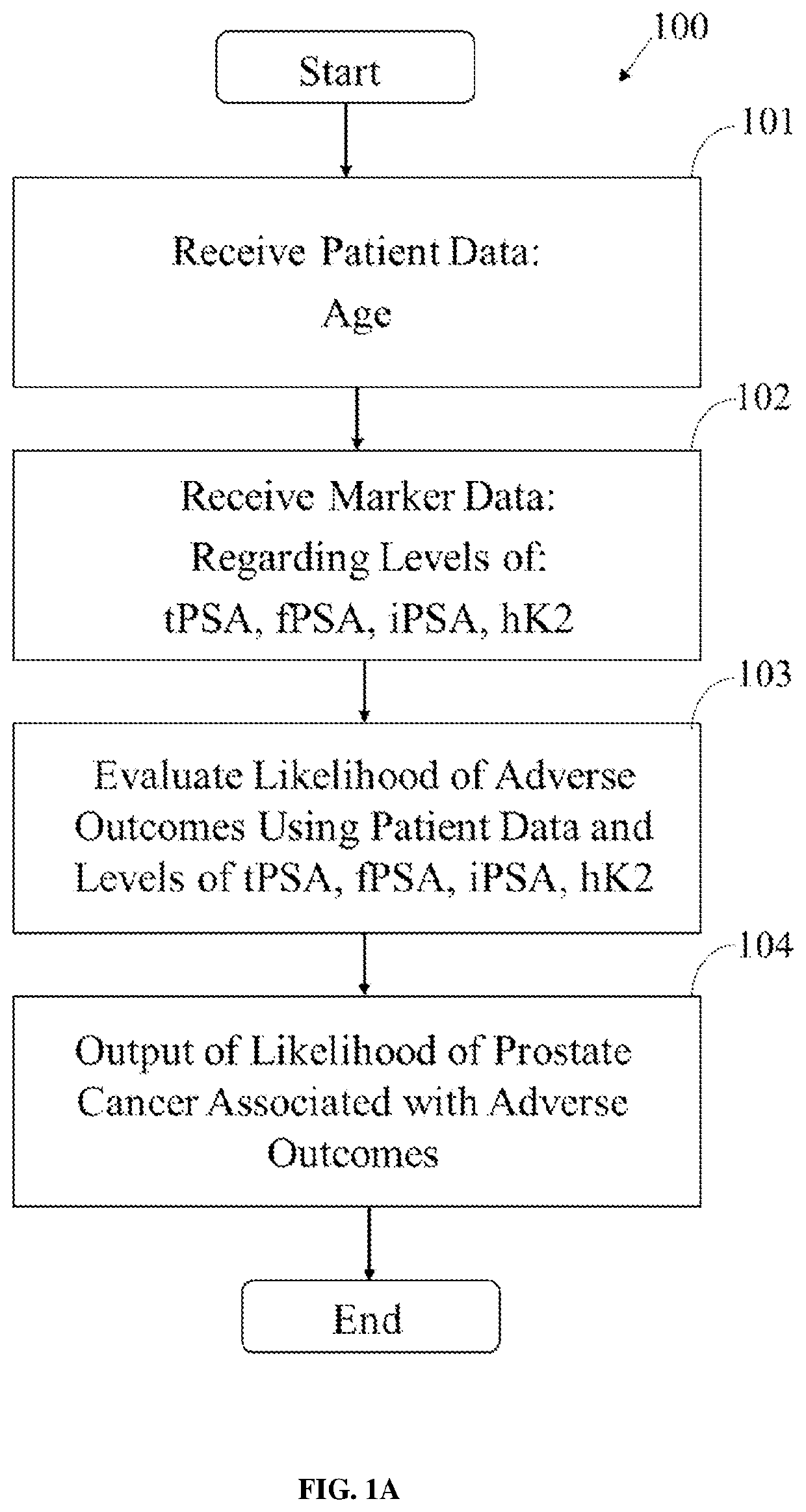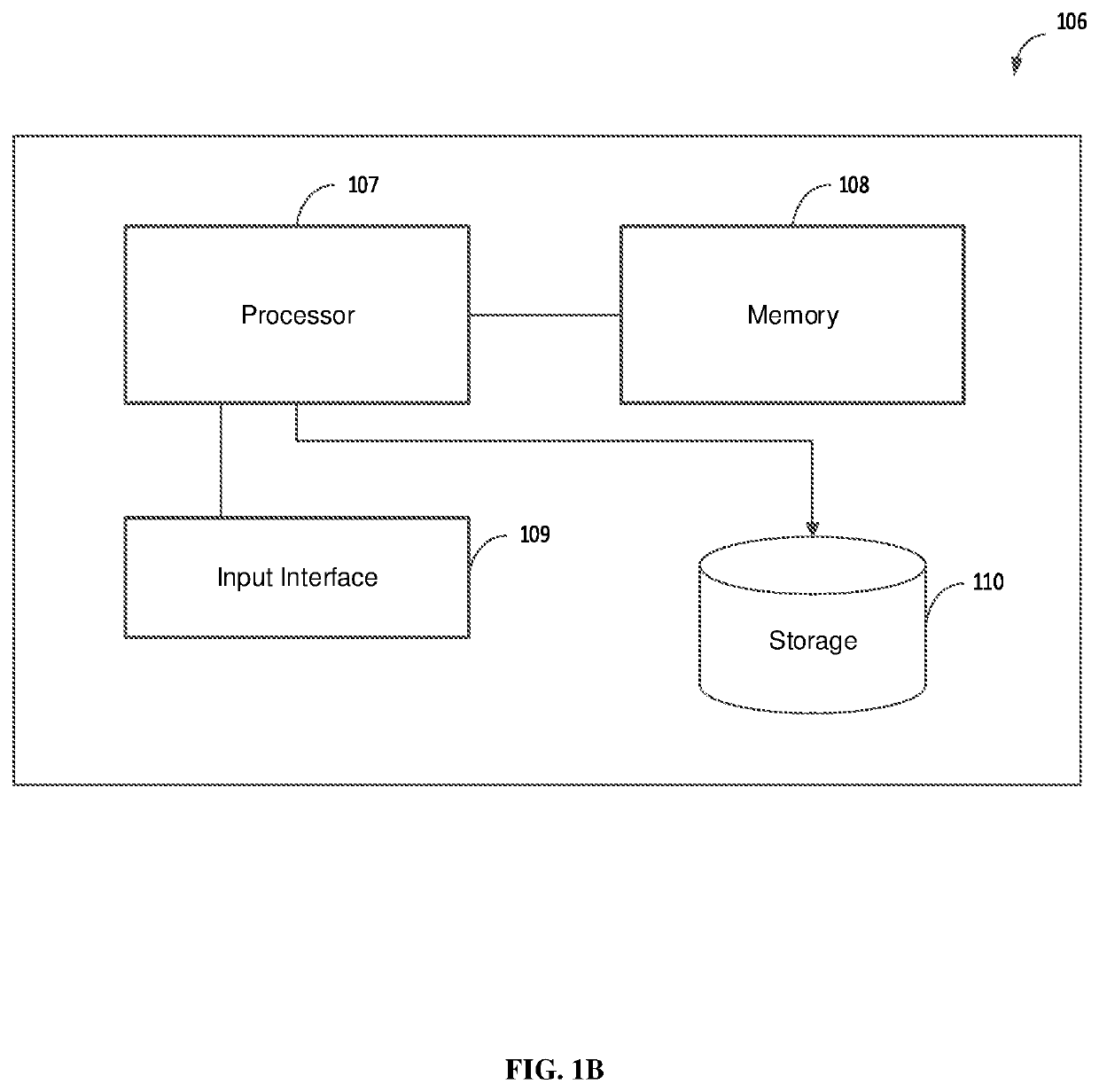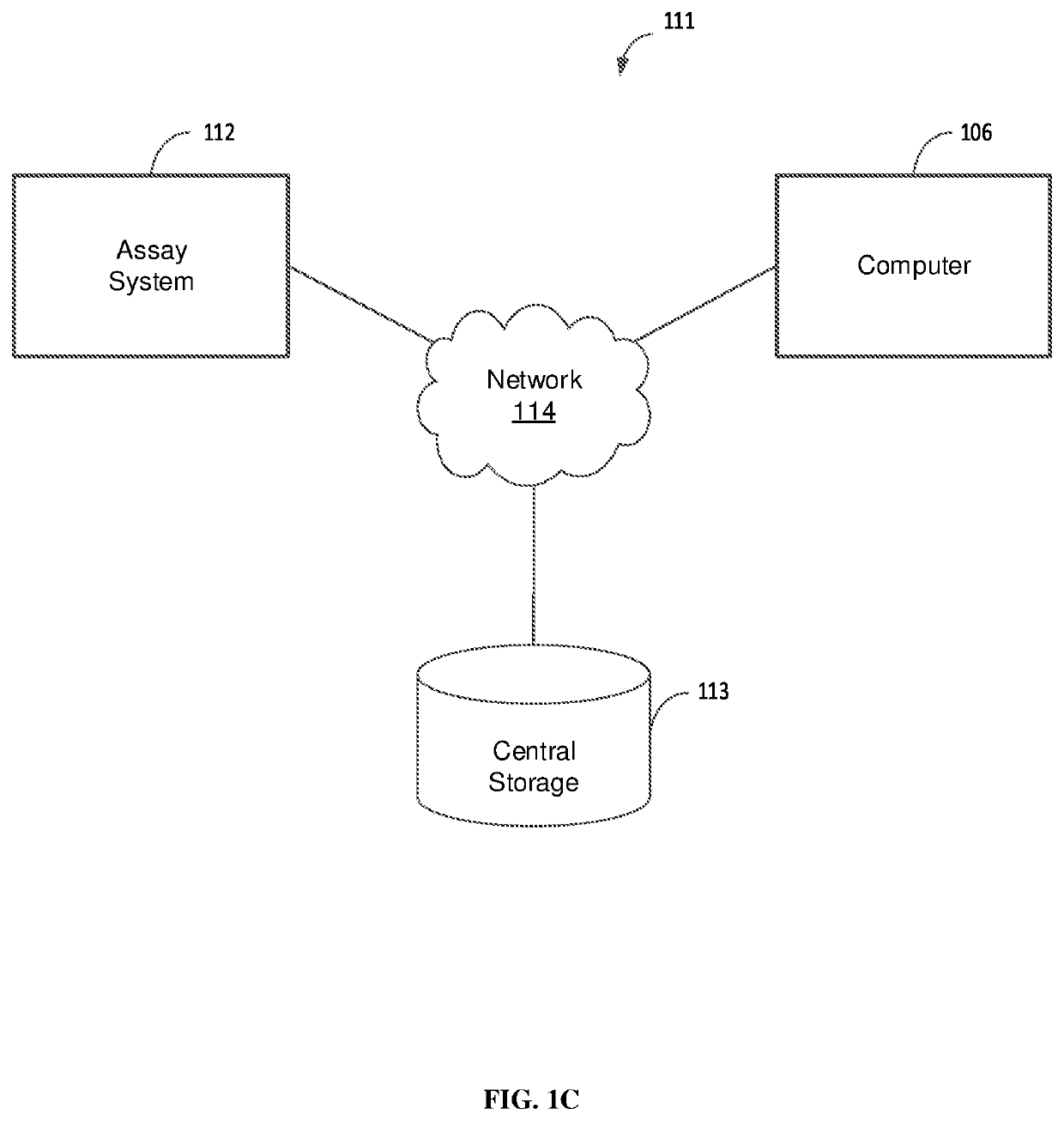Methods for detecting prostate cancer pathology associated with adverse outcomes
- Summary
- Abstract
- Description
- Claims
- Application Information
AI Technical Summary
Benefits of technology
Problems solved by technology
Method used
Image
Examples
example 1
ikrein Markers and Age were Significantly Associated with the Likelihood of a Tissue Sample Obtained from RP Containing Prostate Cancer Pathology Associated with Adverse Outcomes in Patients Diagnosed with Low-Grade Cancer on Biopsy
[0188]A recent large, US multi-center prospective trial enrolled 1312 men referred for prostate biopsy for suspicion of prostate cancer regardless of age, PSA, digital rectal exam findings, or prior biopsy status. A subgroup of men, who were found to have low-grade (Gleason 6) cancer on biopsy and underwent radical prostatectomy (RP), was selected to determine whether certain pre-biopsy information and post-biopsy information were associated with certain prostate cancer grades in the surgical specimen. 177 serum samples from men with biopsy-detected Gleason 6 PCa who underwent RP from 2003 to 2013 and had a serum specimen in the institution's bio-repository were identified. Inclusion criteria were age 45-75 and total PSA 1.5-15.0 ng / ml. ...
example 2
ikrein Markers and Age were Significantly Associated with Aggressive Prostate Cancer at RP in Patients Diagnosed with Low-Grade Cancer on Biopsy
[0200]A recent large, US multi-center prospective trial enrolled 1312 men referred for prostate biopsy for suspicion of prostate cancer regardless of age, PSA, digital rectal exam findings, or prior biopsy status. A subgroup of men, who were found to have low-grade (Gleason 6) cancer on biopsy and underwent radical prostatectomy (RP), was selected to determine whether certain pre-biopsy information and post-biopsy information were associated with certain prostate cancer grades in the surgical specimen. 177 serum samples from men with biopsy-detected Gleason 6 PCa who underwent RP at Martini Klinik from 2003 to 2013 and had a serum specimen in the institution's bio-repository were identified. Inclusion criteria were age 45-75 and total PSA 1.5-15.0 ng / ml. Kallikrein (i.e., tPSA, fPSA, iPSA, and hK2) levels were calculated fo...
example 3
[0211]The predictive power of the kallikrein panel for adverse outcome was also investigated in the context of using am outcome of biochemical recurrence (by tPSA measurement) after radical prostatectomy, which would indicate poor prognosis for the patient and high risk of developing metastatic prostate cancer. In a cohort of 428 men who underwent radical prostatectomy, 28 were found to have biochemical recurrence.
[0212]Multivariate analyses of the candidate predictors of biochemical recurrence reveal that only kallikrein panel was statistically significant in predicting biochemical recurrence. Kaplan-Meier estimator shows clearly that all men with a low kallikrein panel (<20%) have no occurrence of biochemical recurrence in a five year follow up. All occurrences of biochemical recurrence are observed in the group of men with high kallikrein panel (≥20%). Because biochemical recurrence is rare in the Target Population, the cohort size and the number of occurrence of biochemical recu...
PUM
 Login to View More
Login to View More Abstract
Description
Claims
Application Information
 Login to View More
Login to View More - R&D
- Intellectual Property
- Life Sciences
- Materials
- Tech Scout
- Unparalleled Data Quality
- Higher Quality Content
- 60% Fewer Hallucinations
Browse by: Latest US Patents, China's latest patents, Technical Efficacy Thesaurus, Application Domain, Technology Topic, Popular Technical Reports.
© 2025 PatSnap. All rights reserved.Legal|Privacy policy|Modern Slavery Act Transparency Statement|Sitemap|About US| Contact US: help@patsnap.com



